I bet you didn’t think you would find a Monkey Mountain in Germany. But I assure you it’s real and it’s pretty cool if you like monkeys as much as I do.
Table of Contents
Where is Monkey Mountain (Affenberg in German)?
It’s located near Lake Constance (Bodensee) in southwest Germany. It lies 20 hectares of forest with Germany’s largest open-air monkey enclosure.
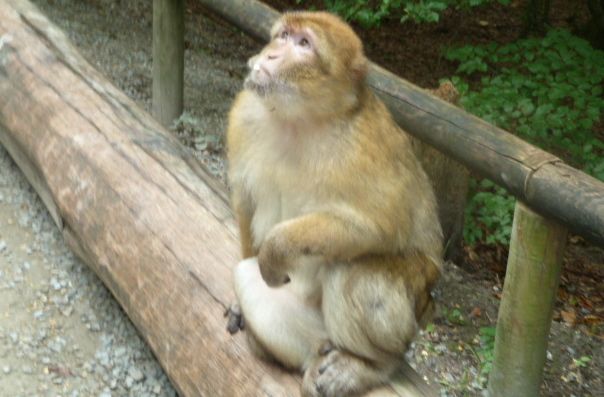
You’ll find over 200 Barbary macaques there. Barbary macaques feel right at home in Germany because their native origins are in the high mountains of up to 2000m in Morocco and Algeria.
Monkey Mountain is not really a mountain but more of a small hill covered in forest. But I was especially interested in it since I have a Bachelor of Science degree in Primatology (the study of primates).
Any chance I have to observe primates, I am there! I must admit though I was a bit apprehensive. I always want to ensure that I am supporting a place where the animals are well cared for.
Fortunately, I had a friend who had been there and had worked in animal welfare and she had a good impression of it, so off we went.
Related Reading: 8 Ways That Travellers Unintentionally Commit Animal Cruelty
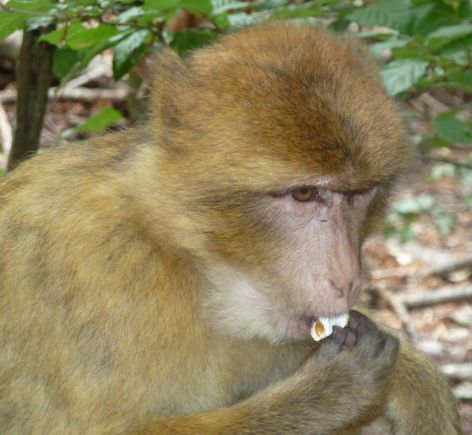
What To Expect At Monkey Mountain
Upon entrance and an €8 admission fee (children under 6 are free), visitors are instructed to stay on the path and not pet the macaques or harass them in any way.
Once the rules are given, visitors will make their way over to the next staff member who carefully watch as visitors can take a handful of popcorn to feed the Barbary macaques.
They only allow you to feed the macaques that are sitting on the wooden fence, wanting to be fed. As I tried to lure a baby macaque sitting just inside the fence with a piece of popcorn I was promptly (but fairly) reprimanded by one of the staff members.
It was impressive to see the number of staff members around. They would seemingly appear out of nowhere if someone tried to break one of the rules.
If a Barbary macaque wants to eat popcorn, they know where to get it. This was clear by the rather ample size of some of the macaques.
Related Reading: Are You a Responsible Tourist?
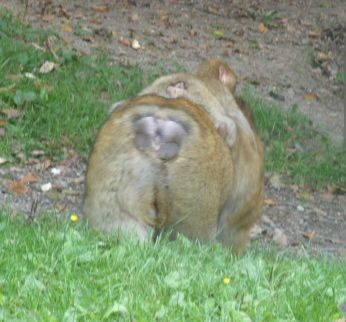
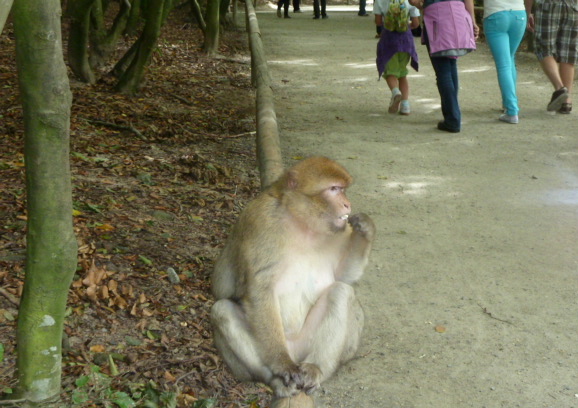
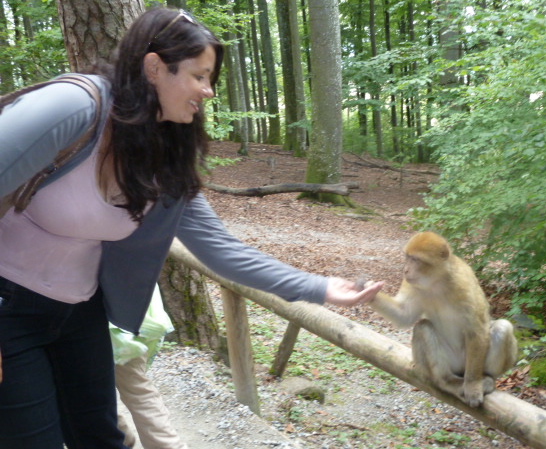
Related Reading: Best Books About Primates
The Monkeys Are Well Taken Care Of at Monkey Mountain
It was surprising but pleasing to disocver that popcorn makes up less than 15% of the Barbary macaque’s diet at Monkey Mountain. That’s a good thing since it’s not what they’d eat in the wild.
In addition to popcorn, they’re fed fruits, vegetables and seeds. Celery seemed to be the most in-demand vegetable that we saw when we were there.
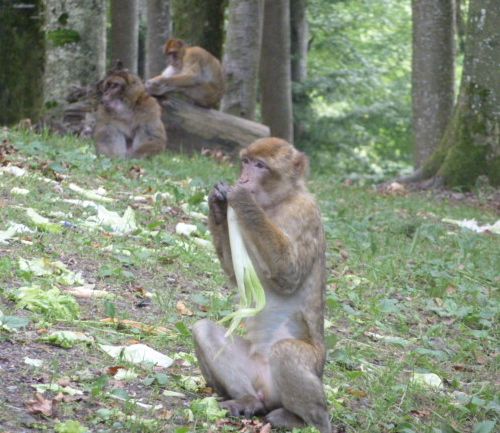
The Barbary macaques also have plenty of ample room to get away from the visitors. Including a forest on both sides of the visitor pathway. And if you looked carefully you could see the odd Barbary macaque sleeping peacefully in a tree.
Or all of a sudden from the quiet forest leaves would come crashing down beside you as a Barbary macaque made his grand entrance. Subtlety does not appear to be a behavioural trait in Barbary macaques.
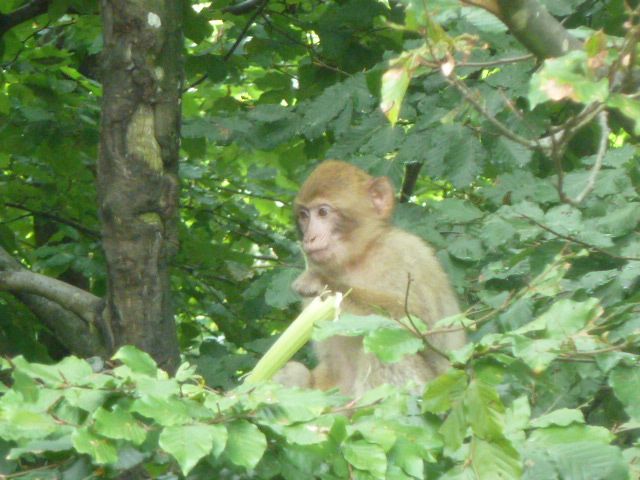
In addition to feeding popcorn to the Barbary macaques, we also observed other behaviors like playing which was hilarious watching the young macaques using tree branches in their quick-paced games of chase.
Recommended Reading: Where to Taste Wine in Europe: The Best Wine Tours in the Continent
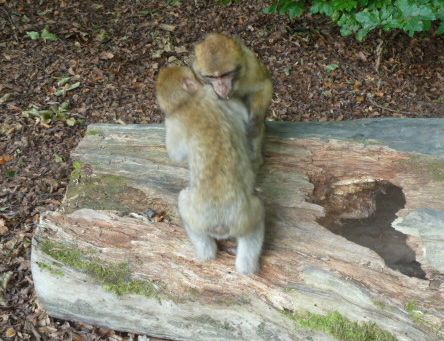
Grooming is another popular behavior that you can observe at Monkey Mountain. Typically, lower-ranking individuals will groom higher-ranking individuals.
It’s not all altruistic though. They do it in the hopes of getting into their good graces and having them protect them should they ever get into a fight with another member of the group.
For high-ranking individuals, it’s like the equivalent of getting an hour-long massage every day. Ahh, the good life.
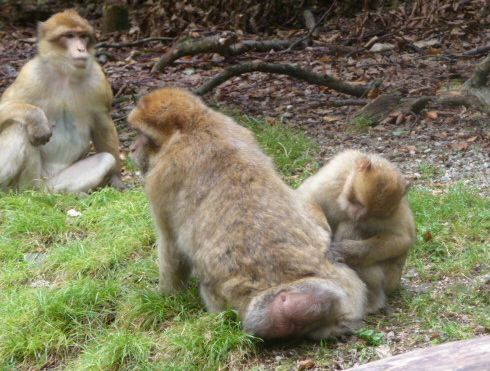
Related Reading: How Seeing Lemurs in Madagascar Can Help Save Them
The Conservation of Barbary Macaques
Conservation also plays a role at Monkey Mountain. Unfortunately, Barbary macaques are an endangered species and the population of macaques at Monkey Mountain contributes to the safety stock of the species.
Behavioral research is also conducted there so the site contributes to learning more about these incredible animals.
For more information on Monkey Mountain see Affenberg.